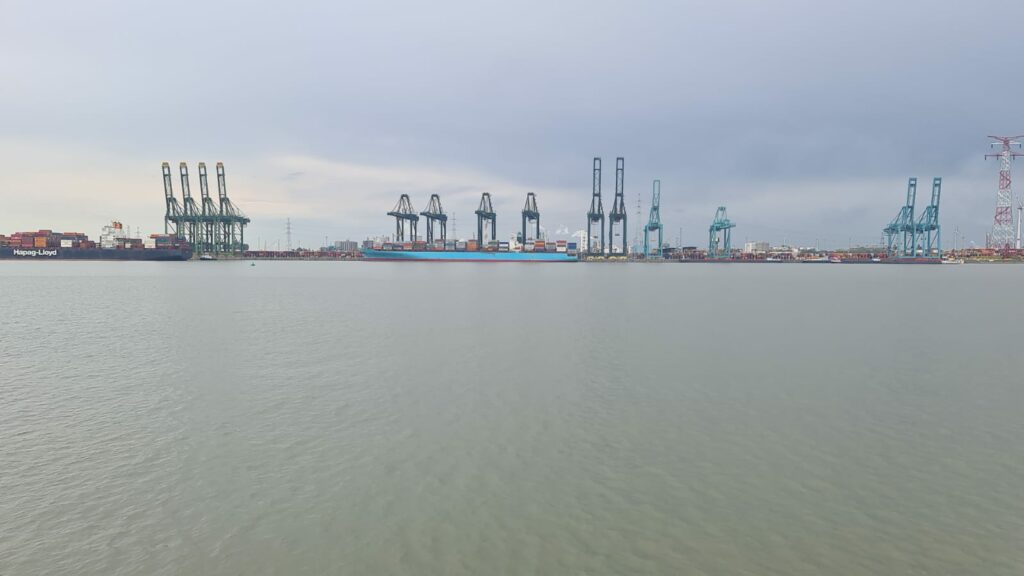€ 5.7 billion is the MSC bid for 100% of Bolloré Africa Logistics which has now been accepted. It covers all transport and logistics activities in Africa.
The Swiss-Italian – Aponte family group got access to the data room and started audits and contractual negotiations. Employee representatives of both groups have also agreed after successful negotiations with employees. So both groups reached an agreement on the acquisition based on a net value of the minority interests of EUR 5.7 billion.
The acquisition is still subject to approval by the relevant competition authorities and the agreement of some of Bollore Africa Logistics counterparties which are expected to be finalised within 12 months.
Bollore Africa Logistics is present in 42 ports and manages 16 container terminal concessions in 8 West-African ports. The group also owns three rail concessions in Africa, namely Sitarail, Camrail and Benirail whereby landlocked countries are connceted to ocean ports.
This network will be in the hands of MSC, which will become the largest transport and logistics operator in Africa adding terminals in Togo and Ivory Coast with TIL (Terminal Investment Group.)
So far, so…….. How does this re-desings the West-African shipping, ports and logistics lanscape ? Lets analyse the West-African tango of the two largest container liner operators and add APM Terminals-Maersk to the picture. APMT has terminals in Angola, Benin, Cameroon, Congo, Ghana, Guinea, Côte’Ivoire, Liberia, Nigeria, Senegal, South Africa and Uganda. Lets add Bollore’s – read now MSC’s – 16 container terminal concessions in, among others, Ivory Coast, Ghana, Nigeria, Cameroon, Gabon, Congo, Togo and Guinea-Conakry, 7 ro-ro terminals, 2 timber terminals. With TIL MSC had already a presence in Togo and San Pedro. Maersk and MSC have share-swaps in a.o. Guinee-Conakry and Liberie-Monrovia. In several other ports they are in JVC’s with Bollore – now MSC. When adding-up, more than 60% of the West_African container handling capacity on Africa’s westcoast is in hands of only 2 operators – MSC and Maersk.
If such a move would occure in Europe or the USA we would see red-lights flashing with the EU & US antitrust authorities. Not in Africa (yet).
Already for some time we see a considerable difference in handling cost in West-Africa ports which is min/max Usd 100/320 compared to the rest of the world Usd 80/155. Offcourse labourcost in Africa is also about double – right ? Or is the other way around ? On the inland logistics side related to landlocked countries we see an import container from Tema (Ghana) to Ouagadougou (Burkina-Faso) taking abt. 13-22 days at cost of Usd 4,800.- while the same move from Newark to Chicago takes 5 days and cost Usd 654.- Export containers move slightly faster and cheaper. How will MSC develop the Railproject Abidjan – Cotonou ? Will MSC – Maersk allow competition or “adjust” their pricing policies to meet their economic objectives ?
And what will be the herritage of Vincent Bollore’s activities in West-African ports.
SPECIAL REPORT: How Vincent Bolloré won control of Ghana’s biggest port | Article | Africa Confidential (africa-confidential.com) And that is only Ghana. He already settled the Togo case for Euro 12 millions. Will MSC be able to trace all the historical hidden “arrangements” made by Bollore – if there are any.
Is it all bad news – well its news and every downside has also an upside. Lets look to the study made by the CSIS – Centre for Strategic International Studies.
190604_AfricaPorts.pdf (csis-website-prod.s3.amazonaws.com) . Can MSC – Maersk be a counterbalance against the strangling port financing, investment and construction heists ?
West-Africa remains a Political unstable region where key factors for top-decision makers are a fast payback and a good and steady return on investment. You never know which military boys band sings next and where you will end-up. Best example is the Necotrans experience in Conakry and how it ended when a new president handed-over the port concession manu-military to Bollore. The rest was for his Turkish friend Erdogan. Lets see how Special forces commander Mamady Doumbouya will react to the MSC take-over.
To be Continued…….
